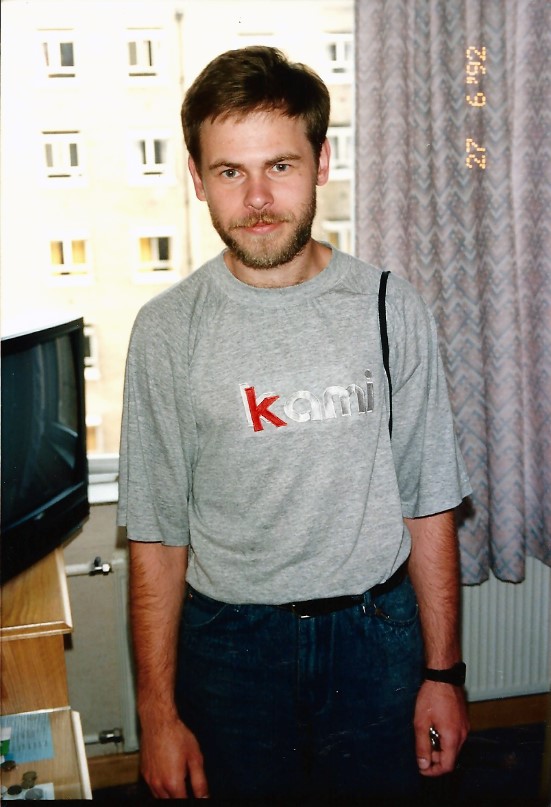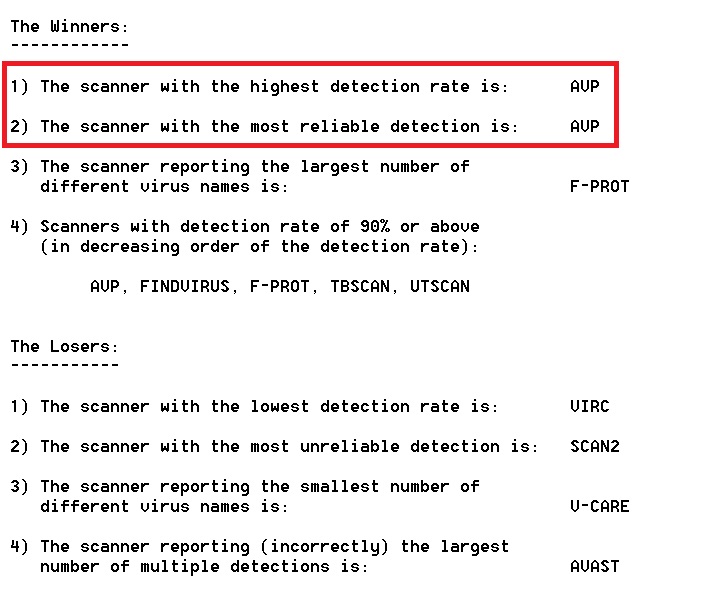June 2, 2020
Cyber-yesteryear – pt. 3: 1992-199x.
Just in case you missed the first two, this is the third episode of my cyber-yesteryear chronicles. Since I’m in lockdown like most folks, I have more time on my hands to be able to have a leisurely mosie down cyberseKurity memory lane. Normally I’d be on planes jetting here, there and everywhere for business and tourisms – all of which normally takes up most of my time. But since none of that – at least offline/in person – is possible at the moment, I’m using a part of that unused time instead to put fingers to keyboard for a steady stream of personal / Kaspersky Lab / cyber-historical nostalgia: in this post – from the early to mid-nineties.
Typo becomes a brand
In the very beginning, all our antivirus utilities were named following the ‘-*.EXE’ template. That is, for example, ‘-V.EXE’ (antivirus scanner), ‘-D.EXE’ (resident monitor), ‘-U.EXE’ (utilities). The ‘-‘ prefix was used to make sure that our programs would be at the very top of a list of programs in a file manager (tech-geekiness meets smart PR moves from the get go?:).
Later, when we released our first full-fledged product, it was named ‘Antiviral Toolkit Pro’. Logically, that should have been abbreviated to ‘ATP’; but it wasn’t…
Somewhere around the end of 1993 or the beginning of 1994, Vesselin Bontchev, who’d remembered me from previous meet-ups (see Cyber-yesteryear – pt. 1), asked me for a copy of our product for testing at the Virus Test Center of Hamburg University, where he worked at the time. Of course, I obliged, and while zip-archiving the files I accidentally named the archive AVP.ZIP (instead of ATP.ZIP), and off I sent it to Vesselin unawares. Some time later Vesselin asked me for permission to put the archive onto an FTP server (so it would be publically available), to which I obliged again. A week or two later he told me: ‘Your AVP is becoming really rather popular on the FTP!’
‘What AVP?’, I asked.
‘What do you mean ‘What AVP’? The one you sent me in the archive file, of course!’
‘WHAT?! Rename it right away – that’s a mistake!’
‘Too late. It’s already out there – and known as AVP!’
And that was that: AVP we were stuck with! Mercifully, we (kinda) got away with it – Anti-Viral toolkit Pro. Like I say – kinda ). Still, in for a penny, in for a pound: all our utilities were renamed by dropping the ‘-‘ prefix and putting ‘AVP’ in its place – and it’s still used today in some of the names of our modules.
First business trips – to Germany for CeBIT
In 1992, Alexey Remizov – my boss at KAMI, where I first worked – helped me in getting my first foreign-travel passport, and took me with him to the CeBIT exhibition in Hannover in Germany. We had a modest stand there, shared with a few other Russian companies. Our table was half-covered with KAMI transputer tech, the other half – our antivirus offerings. We were rewarded with a tiny bit of new business, but nothing great. All the same, it was a very useful trip…
Our impressions of CeBIT back then were of the oh-my-grandiose flavor. It was just so huge! And it wasn’t all that long since Germany was reunified, so, to us, it was all a bit West Germany – computer-capitalism gone bonkers! Indeed – a cultural shock (followed up by a second cultural shock when we arrived back in Moscow – more on that later).
Given the enormity of CeBIT, our small, shared stand was hardly taken any notice of. Still, it was the proverbial ‘foot in the door’ or ‘the first step is the hardest’ or some such. For it was followed up by a repeat visit to CeBIT four years later – that time to start building our European (and then global) partner network. But that’s a topic for another day post (which I think should be interesting especially for folks beginning their own long business journeys).
Btw, even as far back as then, I understood our project was badly in need of at least some kind of PR/marketing support. But since we had, like, hardly two rubles to rub together, plus the fact that journalists had never heard of us, it was tricky getting any. Still, as a direct result of our first trip to CeBIT, we managed to get a self-written piece all about us into the Russian technology magazine ComputerPress in May 1992: home-grown PR!
Fee-fi-fo-fum, I smell the dollars of Englishmen!
My second business trip was in June-July of the same year – to the UK. One result of this trip was another article, this time in Virus Bulletin, entitled The Russians Are Coming, which was our first foreign publication. Btw – in the article ’18 programmers’ are mentioned. There were probably 18 folks working at KAMI overall, but in our AV department there were just the three of us.
 London, June 1992
London, June 1992
So far, so interesting. But were we making any money? The quick – also full – answer: no. Thing was, there was practically no legitimate software market in Russia back then. A lot was pirated ‘sold’ in Russia, but hardly anyone was actually buying authorized product. Some timid attempts were made selling ATP AVP through KAMI’s partnerships (some, to this day, proudly boast of working with us since back then:), but they didn’t come to much. Accordingly I was forced to earn my living… doing piece work for British antivirus company Sophos!
The Brits would send me new samples of viruses they’d caught, and I’d get to work analyzing them to create signatures for their antivirus and then send them back – as far as I recall, at a rate of five US dollars a pop. And that’s how I put bread on the table up until December 1996.
The very first award (of many)
The first testing of antivirus programs on large collections of malware I ever heard about were to take place in spring-summer of 1994. And we decided to take part (details – here). 32 products entered, and each was tested for its detection of some 16,000 infected files. Well, you can probably imagine our surprise when the AV that clocked the highest results to win… was ours! The results of the testing were published on June 19, 1994. And these are those very test results:

Joy!
The role this win had for us can’t be overstated. Early 1994, our first foreign partners were trickling in occasionally. But after these test results – the floodgates opened: by December 1994 we had a full eight overseas partners!
I remember those agreements we entered into with those first partners rather well – because I was the one drawing them up and negotiating most of them early on. Hardly the best fit for a mathematician! So you can imagine my relief when my then-wife, Natalya, stepped in to take over such work and all the accounts. And this is how we got ourselves our fourth member of the team. She’d started work, after five years at home with the kids, at KAMI, in the sales department. And since we needed cash, and the best way of getting it was through sales, she was invited to join us to oversee sales (and contracts and accounts). Let’s remember that in 1994 the Russian software market hardly existed, and so there was very little money (salary) going for any vacancies in ‘Russian software’. High-flying sales professionals could never be enticed to a ~non-existent-industry – to a newbie therein at that! – and they could never have imagined that that newbie would soon be conquering the world ). So instead – Natalya stepped up to the plate, to ‘help out’ as it were.
Early on she had a real hard time of it too. The rest of the team – programmers – were lucky in that to code you kinda get used to having to press the right keys in different programming languages to do your stuff. Alas, there were practically no business schools back then, so she (us too, for non-computer-geeky stuff) had to learn practically everything, from scratch, and off her own bat and learning from mistakes.
Especially tricky was working with our foreign partners, since by far not all of them conducted themselves… completely above board. Quite a few… stole! One of our upstanding partners did the decent thing and told us how our standard contract lacked clauses to reasonably control our partners, and that it would be easy for them to take advantage of this and pull a fast one. We answered that we agreed, but our contract as it was was our only chance of getting access to the world market. Let them steal, we figured; but as least they’ll be getting our product out there at the same time.
And that is how we managed to knock up our first partner network. I write ‘managed to’ in the sense that there was no real plan for actually going about the task. We were making it up learning how to do it as we went along. And anyway, we could hardly plan much, as it was partners who’d come to us after a while. But come early 1995 Natalya – who’d brushed up her English to ‘good’ from ‘Soviet-educated so-so’ in just a year – started to work a lot closer with our partners, often flying off to visit them to help finely-tune our growing international business. Hat off to Natalya!
And it was a short while later when things really started to get going. But more on that in part four…

